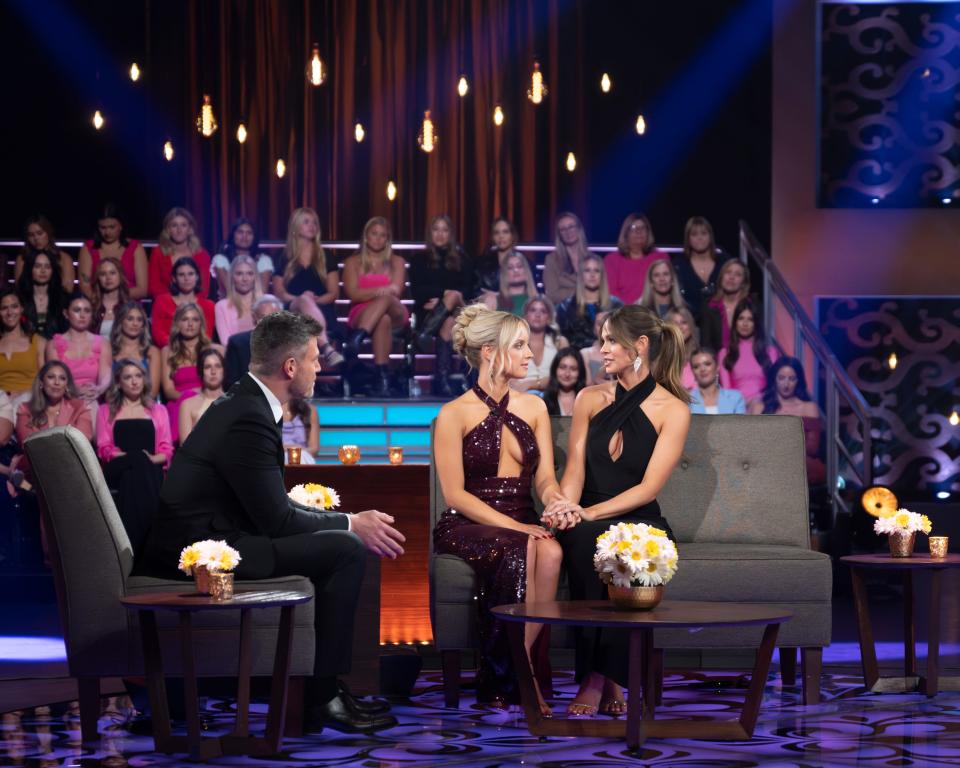'The Bachelor's' surprising revelation about the science of finding a soulmate
The ‘Bachelor’ is a reality television institution. Long before Netflix threw its hat in the ring with hits like “Love is Blind” and “The Ultimatum,” the ABC franchise was selling audiences on the prospect of televised marriage.
Highly steeped in conventional courtship, the show offers up traditional gender roles, vaguely Christian themes and an unwavering argument that successful love stories end with a man down on one knee.
But stripped of its own branding and well-worn tropes, is it not an exercise in polyamory? Or at the very least, a strong thesis that there is no ‘one,’ but instead a lot of different people who can fit the role.
The first Asian American 'Bachelorette' Meet Jenn Tran
25 roses, just one ring
When ‘The Bachelor’ premiered in 2002, it was a novel concept. Lead Alex Michel dated 25 women. In the end, though he did hand out his final rose, he didn’t get down on one knee, as the show intended. It was perhaps for the best because the relationship with winner Amanda Marsh lasted only 10 months.
His runner-up Trista Sutter, who later became the first “Bachelorette,” was not a far-off second. The New York Times, covering the finale, wrote, “He told her ’You're the one.’ The next day, he dumped her anyway.”
Michel’s ending didn’t resemble most of the show’s subsequent finales. While couples more often than not take the train to Splitsville after the show wraps, a proposal and a profession that the final contestant is “the one” have become commonplace – the signature climax to reality television’s signature dating show.
But in the finale of that first season lies an important contradiction at the heart of the show. Although it's meant to help the lead find just one partner for life, "The Bachelor" entertains audiences precisely because of the suspense created by the revelation that it could be more than one person.
'My wife is in this room tonight'
Loyal viewers (known as Bachelor Nation) could tell you the show traffics in plenty of repeat storylines: a pretty-woman style shopping date, a highly obscure band crashing a date for a private performance, the lead thanking contestants for their vulnerability while not always offering their own, and inevitably saying “my wife is in this room tonight.”
But that language implies his wife is someone specific hiding among the crowd; not that it could be any of them – it's just a matter of choosing.
The pomp around the show elevates the idea of finding “the one” (or, for more recent millennial contestants “my person” à la "Grey’s Anatomy"). But the fact that so many leads fall for more than one person at the same time pokes holes in the idea of a singular soulmate.
Ben Higgins, the 20th Bachelor, made waves in 2016 when he became the first lead to say “I love you” to two women. In a confessional interview, Higgins told producers “I could picture both JoJo and Lauren being my wife. I am in love with these two women.” Ultimately, he dumped Jojo, started a reality show with Lauren and is now married to a woman who has no connection to the franchise.
As seasons wore on, it became clear that maybe Higgins wasn’t the first to fall in love with two women. He was merely the first to say the quiet part out loud. Arie Luyendyk and Golden Bachelor Gerry Turner also dropped the ‘L bomb” twice; so did Bachelorettes Michelle Young and Charity Lawson. In 2022, Clayton Echard even told all three of his final contestants that he was in love with them.
Who won 'The Bachelor'? See who Joey picked
Making the 'right choice'
In a 2022 interview, Sean Lowe, who stands out among previous “Bachelors” as a rare lead whose season led to lasting love, compared the process to something a lot more ordinary than the show would like you to believe. “I liken it to meeting 25 strangers on a dating app – you might connect with one of them,” he said.
But in the grand scheme of things, 25 is a fairly small sample size. If for most leads there are at least two people they can fall in love with, perhaps the show is too effective for its own good, by disproving the very heady romanticism it hawks. Leads agonize at the end over “the right choice,” and in their agony, audiences get to see that perhaps either would be fine.
Joey made his final choice Monday, getting down on one knee for Kelsey, but not before runner-up Daisy self-eliminated, sensing she wasn't going to be chosen. It was a rare moment of clarity for all three final participants that make up the show's climactic equation.

Perhaps most convenient for the show's presumption of a soulmate, Daisy revealed she left because she sensed "it wasn't me" ? as if it were fated. And maybe it was. Just like the rest of Bachelor Nation, I'll tune in next season hungry for the false idea that in a group of 25 one is predestined to be right, and on the edge of my seat when it inevitably turns out that it could actually be two (or even three) of them.
This article originally appeared on USA TODAY: How 'The Bachelor' contradicts its own romantic logic
